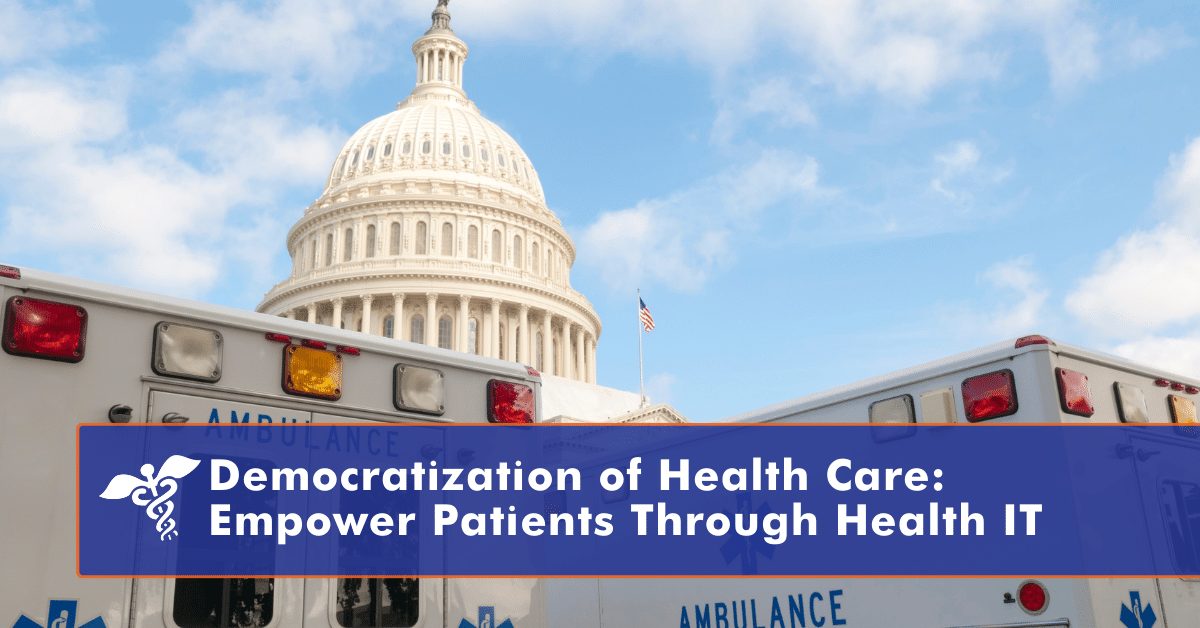
Though the health care industry has previously focused on transactional services, it is evolving toward democratization. The democratization of health care involves making health care more accessible to more people. Health information technology (IT) providers can deliver targeted, data-driven, personalized solutions that empower individual and community health.
Why It’s Necessary to Democratize Health Care
The health care field needs to be democratized because:
- The industry has fallen behind: Health care has been quite slow to adapt to new technology and shift the focus to patients instead of care.
- Patient demands have changed: People are accustomed to data-driven and integrated solutions from other industries and expect likewise from their health care experience.
- Traditional ways are inconvenient: Traditional health care is bureaucratic and process-driven, which can make patients feel unseen. Democratization helps patients feel cared for with a personalized touch from their provider and health services.
How Can Health Care Be Democratized?
Democratizing health care means focusing on patients instead of service. Instead of focusing on treatments and illnesses, accessible health care concentrates on wellness, education and social support. The health care field can be democratized in the following ways:
- Give patients a role in decision-making: Patients must have a role in the systems that affect their health.
- Improve engagement: Patients need engagement tools to engage with their care.
- Promote health literacy: Once patients have access to information, they must understand it. Health care providers must reduce complexities to help the public understand their care.
Democratized Technology That Supports Patients
Technology solutions that increase health care access include:
- Telehealth: Telehealth connects physicians and patients outside the clinic facility, reducing patient costs while improving care. Patients can discuss non-urgent health concerns with their doctor through secure patient portals and conduct their appointments over video.
- Prescription delivery: Prescription delivery services are a convenient way for patients to get their medications. Physicians send prescriptions to the pharmacy for filling. When the prescription is ready, the pharmacist can mail it to the patient.
- Health tracking tools: Health technology creates convenient and integrated care solutions. Medication managers remind patients to take their medications, virtual mirrors encourage exercise and smartwatches track personal health data. These tools help providers get a comprehensive, data-informed view of their patients’ well-being.
MicroHealth Democratizes Technology for Government Customers
MicroHealth supports the democratization of health care through IT solutions that improve access. We create and maintain health IT solutions to suit your needs. Contact us to learn more.
